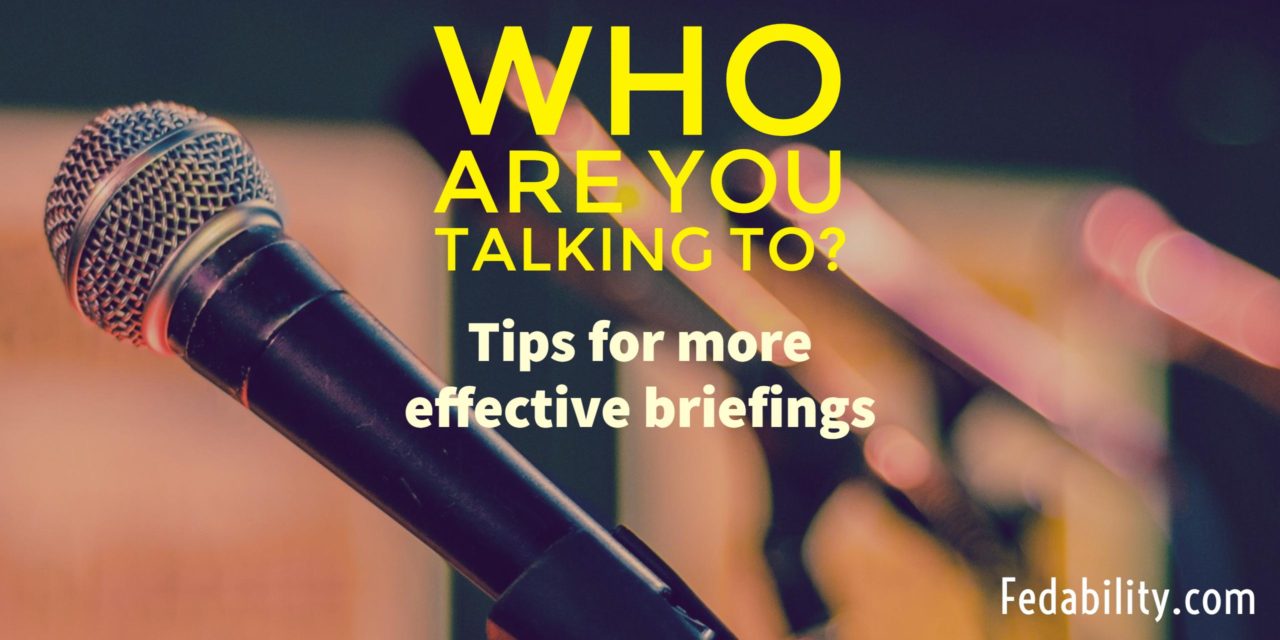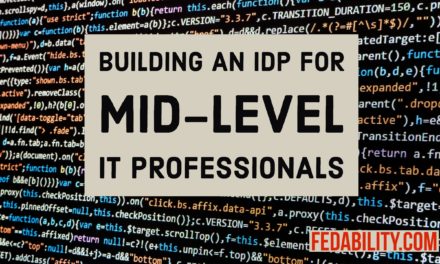Have you ever found yourself in a briefing wondering why you were there? I know I have. I find myself wondering what I to do with the information. Or, I sit there frustrated thinking of what of the other work I could be doing.
Briefings by definition are intended to give information or instruction. The trouble is that most briefings are speaker-centric. That is, more than 95% of all briefings focus on what the speaker wants the audience to know. The briefing is given from the speaker’s perspective. As a result the audience is expected to interpret how the information is relevant to them and what will be expected of them.
Here’s 3 tips that could significantly improve the effectiveness of your briefing.
# 1 Have a more targeted audience.
If you are like most, you frequently find yourself in briefings of more than 20 people from all over the organization. On the surface, I think this happens because it seems like an efficient method to share information. However, it’s tough for the presenter to be able to effectively address the unique needs and questions of everyone in the audience. And as a result, briefings tend to be long, broad, and generic. If meeting organizers are more thoughtful about who must attend, the audience will likely be much smaller. Also, the briefings would likely be significantly shorter. Now, this may translate into needing to conduct multiple customized briefings. However, my guess is that presenters will think more carefully about who needs to attend if it means time on their own calendar.
# 2 Know the audience.
Most presenters place the burden on the audience to interpret how the message relates to them. And, in most cases this approach leaves the audience with more questions than answers. This happens because most presenters spend their time putting together their slides and focusing on what they want the audience to know. To be more effective, presenters should instead spend a majority of their preparation time understanding what questions their audience might have. Or, shortening the briefings down to just what the audience needs. Doing this would be a cultural shift to being more audience-centric rather than what’s easiest for the speaker.
# 3 Call to action.
Last but not least, an effective briefing does not leave the audience thinking, “I wonder what that means specifically for my responsibilities”. Or, “Ok, so now what?” Given that a presenter has taken the above advice they will have a small, specialized audience. And, they have taken the time to understand what their audience does and how their message relates to the audience. As a result, it will be much easier for the presenter to answer the questions of what comes next. Specifically, they can more clearly explain what they want their audience to do differently.
With these 3 tips, your audience will be better prepared to act on whatever information you have shared. Too often I find that presenters believe their responsibility stops at providing information. Remember, the message must be received and able to be applied to be effective. And, that means to give effective briefings, they must focus on their audience needs.
What other tips would you offer to give an effective briefing? Share your suggestions in the comments below.
Like this post? Consider signing up for our weekly newsletter. Each week you’ll get updates on our newest posts. You’ll also receive access to our newest free give-aways. I promise not to spam you or sell your contact information to anyone.





